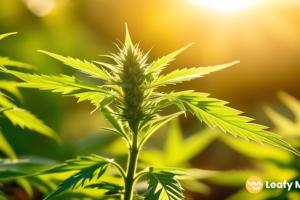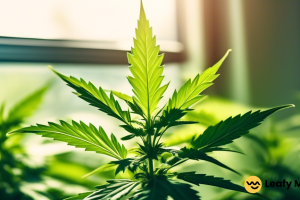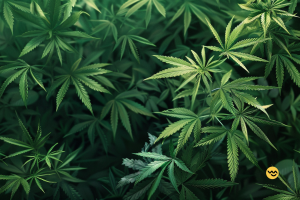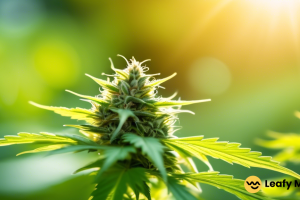Cannabis tolerance is a common phenomenon experienced by regular cannabis users. Over time, the body becomes accustomed to the effects of the cannabinoids, resulting in the need for higher doses to achieve the desired effects.
This can be frustrating for those who want to maintain a consistent level of enjoyment or therapeutic benefits from cannabis. Fortunately, there are several strategies that can help lower cannabis tolerance and allow users to experience the desired effects without needing to consume excessive amounts.
One effective method to lower cannabis tolerance is by taking tolerance breaks, also known as “T-breaks.” This involves abstaining from cannabis use for a period of time, allowing the body to reset and become more sensitive to the effects of cannabinoids.
Tolerance breaks can vary in duration, but most experts recommend taking at least a week-long break to see noticeable results. During this break, it is important to stay hydrated, exercise regularly, and maintain a healthy diet to support the body’s natural detoxification process.
Tolerance breaks not only lower cannabis tolerance but also help users regain a sense of control over their cannabis consumption, ensuring that they can enjoy the desired effects without relying on higher doses.
Key Takeaways
- Tolerance breaks, or T-breaks, are an effective way to lower cannabis tolerance.
- Incorporating CBD-rich cannabis strains can help balance out the effects and reduce tolerance.
- Rotating strains and exploring different consumption methods can also help lower tolerance.
- Combining CBD with THC can enhance therapeutic effects and reduce the need for higher consumption, thus lowering tolerance.
Understanding Cannabis Tolerance
So, you’ve been enjoying cannabis for a while now, but you’re starting to notice that you need higher and higher doses to achieve the desired effects. This phenomenon is known as building tolerance, and it’s a common occurrence among regular cannabis users. Understanding cannabis tolerance is essential if you want to maintain the effectiveness of your cannabis consumption and avoid having to increase your dosage constantly.
Building tolerance to cannabis occurs when your body becomes accustomed to the presence of cannabinoids, the active compounds in cannabis. When you consume cannabis regularly, your body adjusts to the increased levels of cannabinoids and develops a tolerance. This means that the same amount of cannabis that used to produce noticeable effects may no longer have the same impact.
Several factors can influence your cannabis tolerance. One of the main factors is the frequency of use. The more often you consume cannabis, the more likely your body is to develop tolerance.
Additionally, the potency and strain of cannabis you use can also affect your tolerance. High-potency cannabis products, such as concentrates, may lead to a faster development of tolerance compared to lower-potency options.
Another factor to consider is the method of consumption. Inhalation methods, like smoking or vaping, can lead to quicker tolerance development due to the rapid onset of effects. On the other hand, oral consumption, such as edibles, may take longer to develop tolerance since the cannabinoids are metabolized differently in the body.
Taking Tolerance Breaks
To reduce your tolerance, you can try taking breaks from using cannabis. This is often referred to as a tolerance break or a T-break. The purpose of a tolerance break is to give your body a chance to reset and regain its sensitivity to cannabis.
During a tolerance break, self-care is crucial to ensure a smooth transition. Self-care can also help alleviate some of the withdrawal symptoms that may arise. It’s common for individuals to experience irritability, difficulty sleeping, and changes in appetite during a tolerance break.
Engaging in activities that promote relaxation and reduce stress can be beneficial. This can include meditation, yoga, or spending time in nature. Additionally, ensuring you’re getting enough sleep, eating nutritious meals, and staying hydrated can support your overall well-being.
Managing withdrawal symptoms is another important aspect of taking a tolerance break. It’s important to remember that these symptoms are temporary and will subside over time. However, some strategies can help make the process more manageable.
Staying active and exercising regularly can help release endorphins and reduce cravings. Finding alternative relaxing ways, such as taking warm baths or practicing deep breathing exercises, can also be helpful. It may also be beneficial to seek support from friends, family, or a support group to help navigate any challenges that may arise during this period.
Dosing Strategies
One effective approach to reducing your tolerance is to experiment with different dosing strategies.
One popular technique is microdosing, which involves taking small, controlled doses of cannabis throughout the day instead of consuming a large amount all at once. This allows your body to adjust to the cannabinoids gradually and can help prevent the buildup of tolerance. Microdosing can also be beneficial for individuals who are looking to experience the therapeutic benefits of cannabis without feeling the psychoactive effects.
In addition to microdosing, another dosing strategy that can help lower tolerance is rotating strains. Different strains of cannabis contain varying levels of cannabinoids, terpenes, and other compounds, which can have different effects on your body. Regularly switching between different strains prevents your body from becoming too accustomed to the same combination of compounds, reducing the likelihood of developing tolerance.
Certain strains may be more effective for specific symptoms or conditions, so rotating strains can help you find the best fit for your needs.
Trying Different Consumption Methods
Explore various ways of consuming cannabis to help reduce your tolerance and enhance your enjoyment. One popular method is vaping, which involves heating the cannabis flower or oil to a temperature that allows the cannabinoids to be released without burning the plant material. Vaping offers a more efficient way of consuming cannabis compared to smoking, as it eliminates the harmful toxins produced by combustion. This can be especially beneficial for individuals with high tolerance levels, as it allows for a faster onset of effects and a more potent experience.
On the other hand, edibles provide a longer-lasting and more intense high compared to vaping. When cannabis is ingested, it is metabolized by the liver, which converts delta-9 THC into 11-hydroxy-THC, a more potent form of the compound. This conversion process can take up to two hours, but the effects can last for several hours, making edibles a great option for those looking to reduce their tolerance and prolong the duration of their high.
Another option to explore is the use of topicals and tinctures. Topicals are cannabis-infused products that are applied directly to the skin, such as lotions, balms, and oils. These products provide localized relief from pain, inflammation, and other skin conditions without producing a psychoactive effect. While topicals may not directly lower your tolerance, they can be a beneficial addition to your cannabis routine by providing relief to specific areas of the body.
Tinctures are liquid extracts of cannabis that are typically taken sublingually (under the tongue). They offer a discreet and convenient way to consume cannabis, as they can be easily measured and absorbed into the bloodstream. Tinctures can provide a fast-acting and controlled experience, making them a suitable option for individuals who want to lower their tolerance and have more control over their cannabis consumption.
By trying different consumption methods such as vaping vs. edibles and topicals vs. tinctures, you can effectively lower your cannabis tolerance and enhance your overall enjoyment. Each method offers its own unique benefits and effects, allowing you to tailor your cannabis experience to your specific needs and preferences. Whether you prefer a fast-acting and potent high or a longer-lasting and more controlled experience, there is a consumption method that can help you achieve your desired results.
Is Lowering Cannabis Tolerance Essential for Yoga and Meditation Practitioners?
Lowering cannabis tolerance can enhance the experience for yoga and meditation practitioners. The best cannabis strains for yoga can help create a more focused and relaxing practice. By reducing tolerance, individuals may find that they need less cannabis to achieve the desired results, making their practice more effective.
Incorporating CBD into Your Routine
Incorporate CBD into your daily routine to help decrease your tolerance to cannabis. CBD, or cannabidiol, is a non-psychoactive compound found in cannabis that has gained popularity for its potential therapeutic benefits.
When used in conjunction with THC, the main psychoactive compound in cannabis, CBD can help balance out the effects and reduce the development of tolerance.
Exploring different strains of CBD-rich cannabis can be a great way to incorporate CBD into your routine. Different strains contain varying levels of CBD, so you can experiment with different ratios of CBD to THC to find what works best for you. Some strains may have a higher CBD content, while others may have a more balanced ratio of CBD to THC. By trying different strains, you can find the right balance that helps to decrease your tolerance to cannabis.
Combining CBD with THC is another effective way to lower your cannabis tolerance. CBD has been found to have anti-inflammatory, analgesic, and anti-anxiety properties, which can help counteract the negative effects of THC and reduce the development of tolerance.
When CBD and THC are used together, they interact synergistically, enhancing each other’s therapeutic effects. This combination can help to modulate the psychoactive effects of THC and provide a more balanced and mellow experience.
Frequently Asked Questions
Can cannabis tolerance be permanent?
Cannabis tolerance can be long-term but not permanent. The body can develop a tolerance to the effects of cannabis over time, requiring higher doses for the same effects. Strategies for managing tolerance include taking tolerance breaks and using different strains or consumption methods.
How long should a tolerance break last to effectively lower cannabis tolerance?
The optimal duration for a tolerance break to effectively lower cannabis tolerance can vary depending on the individual. However, research suggests that taking a break of at least 2-4 weeks can help reset tolerance levels. Finding the right balance between frequency of use and tolerance is crucial.
Are there any specific dosing strategies that can help lower cannabis tolerance faster?
Microdosing techniques, such as starting with small doses and gradually increasing, can help lower cannabis tolerance faster. Additionally, incorporating regular exercise into your routine can enhance the process by increasing metabolism and promoting detoxification.
Can trying different consumption methods really make a difference in lowering cannabis tolerance?
Trying different consumption methods, such as using alternative cannabinoids and microdosing techniques, can indeed make a difference in lowering cannabis tolerance. These methods allow for a more controlled and gradual exposure to the cannabinoids, preventing tolerance buildup.
How does incorporating CBD into your routine affect cannabis tolerance?
Incorporating CBD into your routine may potentially benefit your cannabis tolerance. Research suggests that CBD can modulate the effects of THC, potentially reducing tolerance. Recommended CBD dosage varies, but starting with low doses and gradually increasing is advised.











Leave a Reply